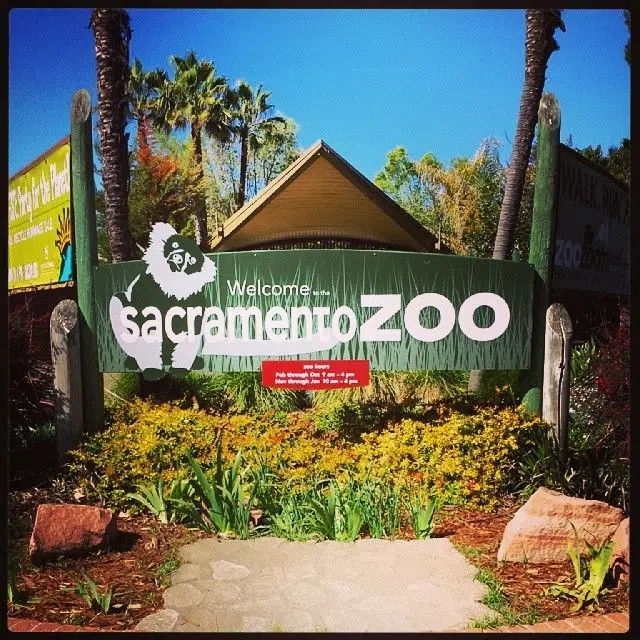
Looking for a place to spend some fun and Quality time? A zoo is a perfect location for that as you can not only watch various animals and their actions but also learn more about their habitats and behavior in nature. Visiting a zoo can be attractive to people of any age. You can often see fascinated faces of small children along with no less impressed expressions of their parents and even elderly relatives.
If you live in Sacramento or somewhere nearby, you have a fantastic opportunity to visit Sacramento Zoo. With over 400 sacramento zoo animals representing species from around the world, visitors can observe everything from majestic big cats to playful primates. Founded at the beginning of the last century, the place has become one of the most favored destinations for the city dwellers, guests, and tourists from all over the world.
Sacramento Zoo has a long history of development. It started only as a small collection of animals and managed to expand its territory and possessions majorly over the years. Once you learn the story of this place, you cannot stay indifferent to its inhabitants and the people who take care of them.
The steady development of Sacramento Zoo has made it possible for the place to unlock its full potential over time. Nowadays, the place surprises us with its scale and variability of species presented. But how did the Zoo become what it is now?
Let’s trace its history and see how the place was growing over the years.
Sacramento Zoo started as the William Land Park Zoo, and because of its smaller size, many called it “the little zoo in the park.” The combination of different animals collected from parks nearby was presented as the zoo in 1927 for the first time. It started as a more than four-acre location with nearly 40 different animals that included many species, from birds to deer.
In the 1940s, a new addition was delivered to the zoo. With the help of the Sacramento Union Newspaper, a fundraiser for buying another animal for the zoo was organized. The purchase was made with great success, and an elephant became a new member of the zoo family. Later, another elephant was acquired to keep the first one company.
During the 60s, the great expansion of the zoo territory began. Today’s sacramento zoo size encompasses 14 acres, making it an intimate yet comprehensive wildlife experience.This allowed the zoo to bring more animals, and with the help of sponsors, a grizzly bear and orangutans were added. At these times, the first tickets were introduced (previously, the entrance had been free), and they were sold for 25 cents.
1970 was the year when the zoo acquired its current name — Sacramento Zoo. The development continued, and an educational program was started. Moreover, the first Reptile House of the zoo was opened, and all of this happened within one year.
In the 80s, another major development decision was made. If previously animals had been put behind the iron bars, now some of them were moved to bigger enclosures that were similar to their natural habitats. Those aviaries were protecting the animals from the visitors using moats that allowed to watch animals from a safe distance. This has not only improved the experience of visiting the zoo by showing where animals might live in nature, but also made the living conditions for animals much better. Improvements didn’t stop their and more plans for the development have been approved,
By the end of the century, many rare species of animals were added to the zoo collections. Rare Feline Center began its work and lion tamarin and snow leopard were exhibited. Moreover, orangutans received more space to jump around with the addition of climbing trees. Water life of the zoo also expanded, and flamingos along with other waterfowl have found a home at the zoo lake.
Moreover, as the financing from the city wasn’t enough anymore, the Sacramento Zoological Society started to provide full financial help and control over management.
The century started with big improvements of animals’ enclosures. More knowledge about the animal life in captivity was discovered, so the changes had to be done. It was necessary to both satisfy the interest of the zoo visitors, and make a space that is comfortable for the animals to live in. Luckily, the designs have exceeded all expectations, and creative and spacious enclosures were introduced to the public. For example, The Panda Forest, where different species, including endangered pandas, birds, and fish started to live, helped to reproduce more red pandas.
Also, in the beginning of the century, more animals arrived at the Sacramento Zoo. Such species, as saki monkey, crested screamers, thick-billed parrots, and leopard tortoise were welcomed to the zoo family. Moreover, connections with other zoos all over the country were made to increase the number of the mentioned parrot species.
In 2004, the visitors saw the opening of the exhibit called The Lemurs of the Lost World. The same year, anteaters were exhibited, and people could watch them through the glass screen. Later, in 2005, a veterinary zoo hospital was opened after a quick construction process.
For the 80th birthday of Sacramento Zoo, an exhibit of penguins was introduced. It was supposed to be a one-time thing, but the success of it was so big that the zoo decided to reopen the exhibition once again in 2008.
The 2010s have brought many new inhabitants to the zoo. In 2010, Tall Wonders of Africa was opened, and it was a place where giraffes lived. The same year has introduced river hogs, Sumatran tiger, and southern tamandua. The next year, an interactive otter enclosure was opened.
Similarly to the giraffes’ habitat, the Small Wonders of Africa were created in 2014 and it was a big success. Small mammals were displayed there and many species, like aardvark, fennec fox, and others, were included. 2016 was the year of reconstructions, and renovations of the front part of the zoo were done.
In 2017, Sacramento Zoo had some exciting news. For the first time in 18 years, Caribbean flamingos were hatched. This hasn’t happened at the zoo since 1999. Six small chicks were welcomed, and later they continued to please visitors.
2018 started with a new CEO of the Zoo, Jason Jacobs. His work was identified by many new changes to the zoo structure. What is more, new species have been brought to Sacramento, and it expanded the zoo’s inhabitants.
With over 90 unique species and more than 300 animals, Sacramento zoo animals represent an incredible diversity of wildlife from around the globe. Visitors can observe magnificent African species including Masai giraffes at the popular Tall Wonders of Africa exhibit, where guests can get eye-to-eye views and even feed these gentle giants. The big cat collection features impressive predators such as African lions, cheetahs, jaguars, and the elusive clouded leopard, while the newest addition, Slamson II the lion, recently made his public debut through a partnership with the Sacramento Kings.
Animals at Sacramento zoo include fascinating primates like Sumatran orangutans, white-handed gibbons, ring-tailed lemurs, and squirrel monkeys, along with unique species such as red pandas in their forest habitat, where successful breeding has occurred in recent years. The zoo’s interactive North American river otter exhibit allows visitors to watch these playful mammals through glass panels, while the Southern White rhinoceros, okapi, and Grevy’s zebras showcase African wildlife in naturalistic settings.
From reptiles like Galapagos tortoises, American alligators, and various snake species in the Reptile House, to colorful birds including Caribbean flamingos, blue and gold macaws, and burrowing owls, sacramento zoo animals offer educational opportunities for visitors of all ages. Recent additions and successful breeding programs, including the 2017 hatching of Caribbean flamingo chicks for the first time in 18 years, demonstrate the zoo’s commitment to conservation and species preservation.
Today, zoos are not simply places for displaying animals so that people can enjoy their unique appearances or unusual behavior. The main goal of zoos has changed, and although they still value visitors’ pleasant experiences, the priorities shifted a little.
The Sacramento Zoo wants the citizens and visitors of the city to have a fun time walking around and watching animals. But also, it wants to educate people on the importance of saving animals and preserving wildlife. Teaching visitors of the zoo information about animals, their natural habitats, and behavior has become one of the goals.
Moreover, providing an environment for the recreation of animals, especially endangered ones, is also crucial to zoos. Saving wildlife would not be possible without places such as Sacramento Zoo.
If you are living in Sacramento or happen to be nearby, do not miss the chance to visit Sacramento Zoo. There you will not only enjoy observing the diverse sacramento zoo animals but also learn more about them and their life in the wild and educate yourself on the importance of saving them.
While many believe garbage disposals can handle any food waste, this is a common misconception that leads to problems. Certain items will consistently cause clogs and should never enter your disposal.
Hard items like bones, pits, corncobs, seeds, and ice cubes can damage or jam the disposal’s grinding mechanism. Similarly, fibrous materials such as pasta, celery, asparagus, corn husks or silk, lettuce, and banana peels can wrap around the disposal’s components and cause malfunction.
A major issue occurs when potato peels clog drains, as these starchy vegetables create a paste-like substance when ground up. When potato skins in garbage disposal units combine with water, they form a thick, sticky mixture similar to what happens with grease and fat. Additionally, knowing how to unclog eggshells in garbage disposal units is crucial, as they create tiny, granulated particles that stick in crevices and accumulate over time. Like eggshells, coffee grounds can also compact into tight spaces, leading to stubborn clogs.
Grease, fats, and oils are particularly problematic because they solidify as they cool, creating blockages that prevent proper water flow and waste disposal. When combined with other food particles, these substances can create extremely difficult clogs to remove.
I bring over 9 years of dedicated plumbing experience to the table. As a seasoned professional in the plumbing industry, I've tackled a wide range of projects, from residential repairs to large-scale commercial installations.

